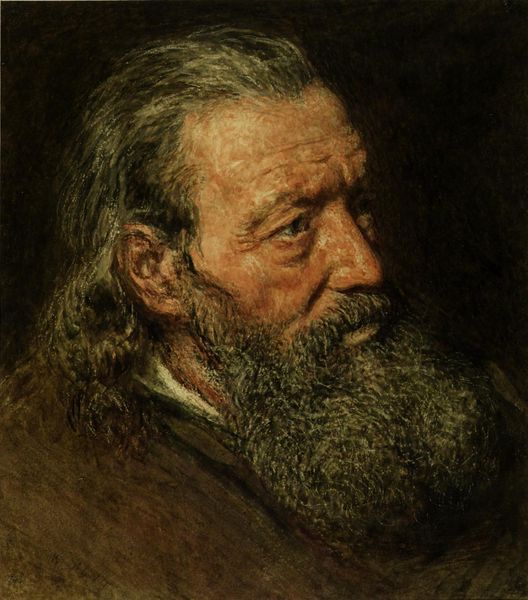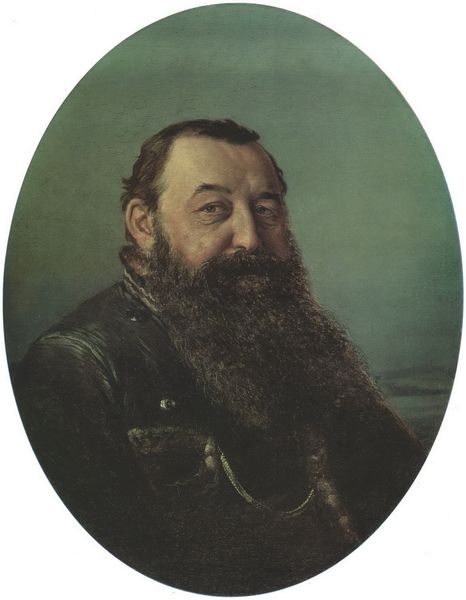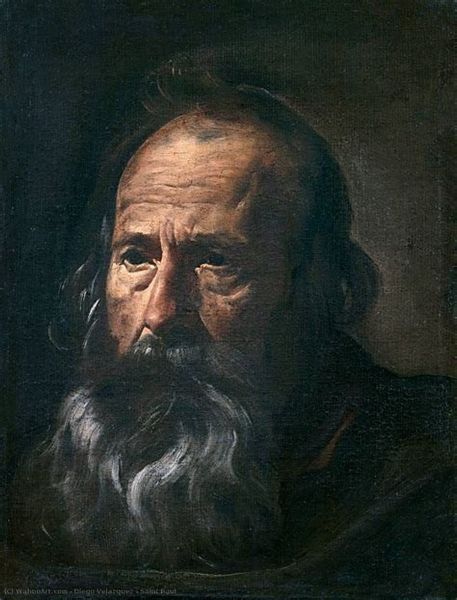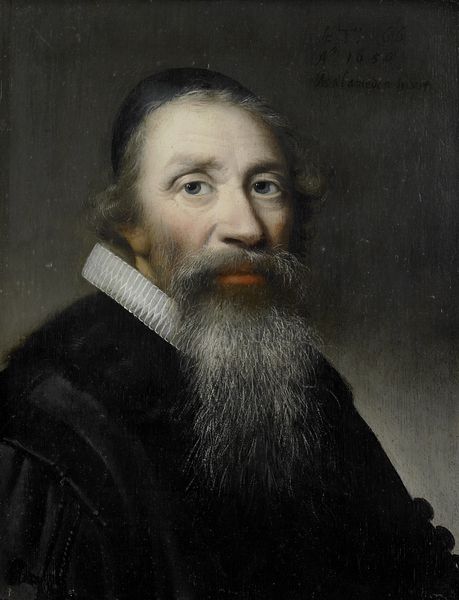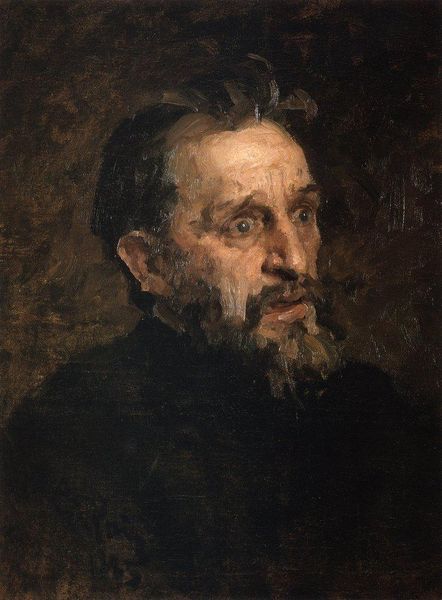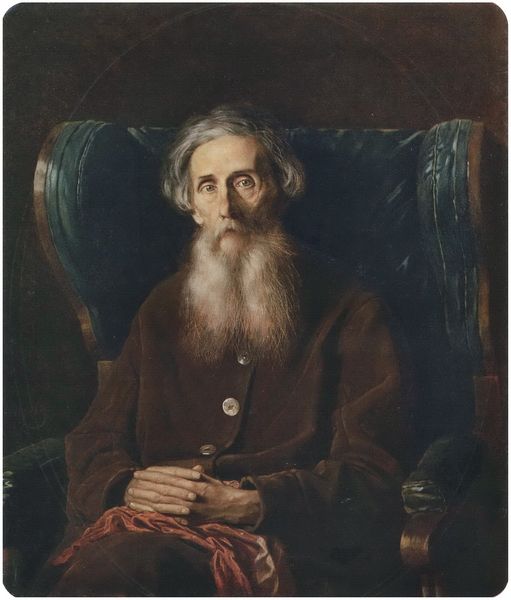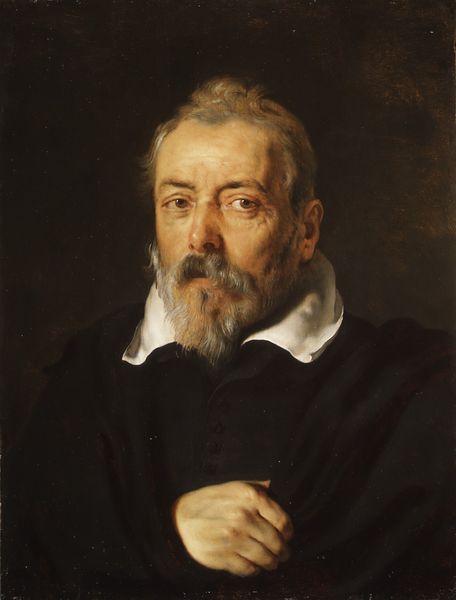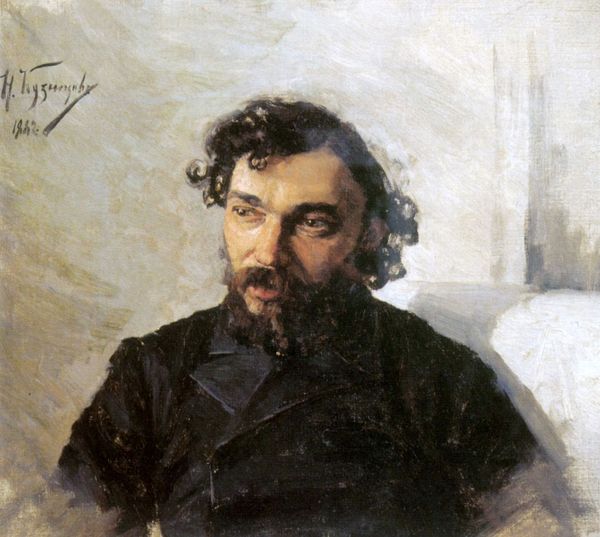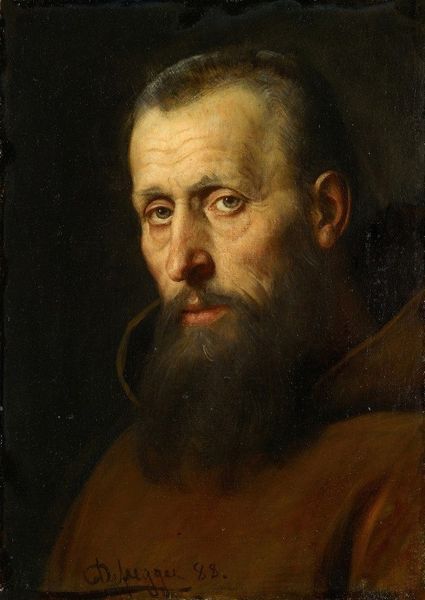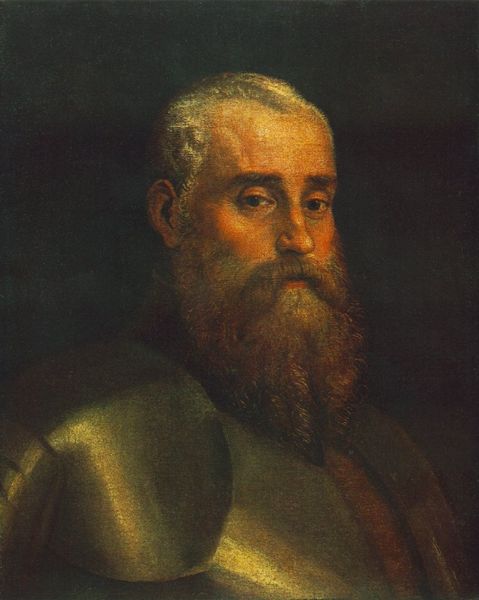
painting, oil-paint
#
portrait
#
self-portrait
#
painting
#
oil-paint
#
figuration
#
oil painting
#
romanticism
#
academic-art
#
realism
Copyright: Public domain
Editor: This is Jan Matejko’s self-portrait, an oil painting. The man portrayed looks straight at the viewer, giving a rather somber impression. What can we learn from this piece? Curator: Observe Matejko’s eyes; they hold the weight of historical narratives he so diligently painted. Self-portraits often delve into personal identity but consider how Matejko, a Polish painter, intertwines national identity within his own image. His beard and glasses are less about individual vanity and more about a recognizable trope of the intellectual, almost a 'sage' figure in the Polish cultural consciousness. What aspects of Polish history and identity might he be referencing through these visual cues? Editor: I hadn’t considered it as a representation beyond the personal. So, his appearance symbolizes something larger? Curator: Precisely. Consider his serious gaze. Does it convey determination, concern, or perhaps a burden of responsibility? Think about the context of Poland’s history – a nation grappling with partitions and a yearning for independence during Matejko's lifetime. These emotions and cultural memories can be subtly communicated through a self-portrait, becoming almost an icon of Polish resilience. Editor: That is so interesting. I guess there is always much more to discover in an image than initially meets the eye. Curator: Indeed, and with Matejko, exploring how personal portrayal intertwines with powerful national symbolism reveals even more layered meanings. It is the same kind of principle you might see in religious iconography: specific choices are deliberately included, like a form of visual language.
Comments
No comments
Be the first to comment and join the conversation on the ultimate creative platform.
